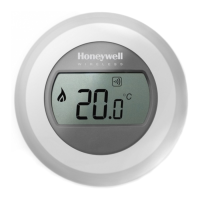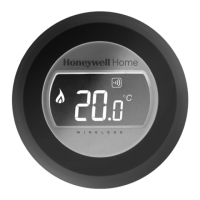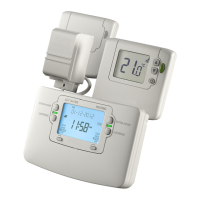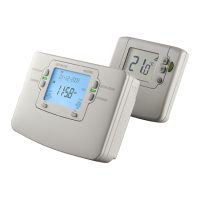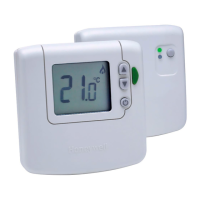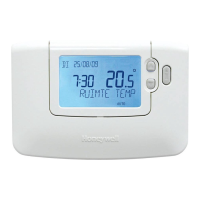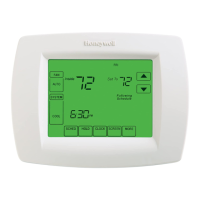Appendix
10. Appendix
RF
10.1. Help with problems
RF operation band
SRD (868.0–868.6) MHz,
1 % duty cycle
Problem Cause Remedy
RF communication
range
Typical 30 m in a residential
building environment
Batteries
inserted
incorrectly
► Insert the batteries
correctly.
Teach-in failed
RF communication
technology
Short, high rate transmissions to
minimise air time and avoid
collisions
Radio
connection
failure
► Eliminate interference
sources (metal, wireless
devices).
► Correct installation site.
► Repeat the teach-in.
Blocking immunity
Receiver class 2 (ETSI EN300
220-1 version 1.3.1)
RF binding
Factory pre-bound with the room
unit HCW 80 (kit Y6630D1007
only)
HC60NG does
not react to set
point changes
on HCW 80
HC60NG
and
HCW 80 not
teached-in
► Reset HC60NG.
► Follow the teach-in
procedure as described
in section 5.
Environmental & Standard
Operating temperature 0 to 40°C, max. 6.5 A
–20 to 55 °C
Shipping & storage
temperature
Humidity
Humidity range 0 to 90 % rh,
non-condensing
Teach-in
procedure
incorrect/
incomplete
► Repeat the teach-in.
After teach-in
red LED is on
and green LED
is flashing once
every 3 sec
IP class 30
10.4. Approvals
Position of
HCW 80
incorrect
► Repeat the teach-in
keeping approx. 1 m
distance between
HCW 80 and HC60NG.
Conforms to the requirements of the following directives:
HCW 80: RoHS: 2011/65/EC
EMC: 2004/108/EC
Communi-
cation loss
R&TTE: 1999/5/EC
RF signal
blocked
► Relocate the HCW 80
(see section 0).
Red LED of the
HC60NG is on
HC60NG: RoHS: 2011/65/EC
EMC: 2004/108/EC
LVD: 2006/95/EC
Batteries of
HCW 80
exhausted
► Replace batteries in
HCW 80
(see section
9).
R&TTE: 1999/5/EC
10.5. Device and function definition in
accordance with EN 60730-1
HC60NG
and
HCW 80 not
teached-in
► Follow the teach-in
procedure as described
in section
5.
• Purpose of the device is temperature controlling
• Device fulfills protection class 2
• Independently installable electronic control system with
fixed installation
10.2. Specifications HCW 80
• Type of action is type 1.8
• Temperature of ball thrust hardness test for housing
components 75 °C and for live parts such as, for
example, terminals 125 °C
Batteries 1.5 V, type LR06, AA
Frequency 868.3 MHz (transmitter)
Operating temperature 0 °C to 50 °C
• EMC emitted interference test at 230 V∼, 50 HZ
maximum
Storage temperature –20 °C to 70 °C
• Pollution degree is 2
Humidity 5 % to 90 % relative humidity
• Rated voltage is 4000 V (corresponding to overvoltage
category III)
IP class 30
• Software class is A
10.3. Specifications HC60NG
10.6. WEEE directive 2012/19/EC
Electrical
Waste Electrical and Electronic Equipment
directive
Receiver power supply 230 V AC (+10 %, –15 %), 50 Hz
Switch type SPDT potential free
Output rating
24–230 V AC, max. 6.5 A resistive,
3 A inductive, cos φ = 0.6
• At the end of the product life dispose of the packaging
and product in a corresponding recycling centre.
Wire access
(receiver only)
From the rear (wall box mounting),
right an bottom
• Do not dispose of the unit with the usual domestic refuse.
• Do not burn the product.
• Remove the batteries.
• Dispose of the batteries according to the local statutory
requirements and not with the used domestic refuse.
11
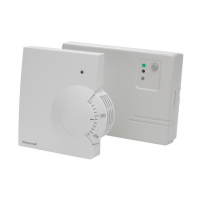
